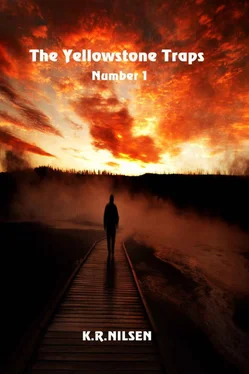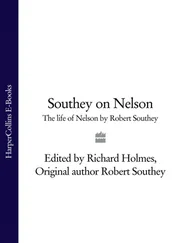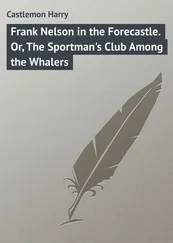It would be touch and go for him financially, Harland knew, until the crops were in the ground next spring. What good was bringing in another record harvest from the fecund Minnesota River Valley earth if the market paid in nothing but dust?
On the broad promenade of the former Company M cavalry barracks of Fort Yellowstone, Wesley Crouch stopped to sample the budding day. He peered across the century-old army parade ground at the heart of the buttoned-down park headquarters compound at Mammoth Hot Springs.
Horse soldiers had built the red terracotta-roofed structures that the Park Service’s Yellowstone National Park administration called home. To the west of the two score buildings, the air shimmered with moist heat wafting from travertine mineral terraces, the first grand geothermal features that tourists encountered upon entering the park through the great stone Roosevelt Arch spanning the highway at the north entrance.
The morning dawned cold, well down in the twenties. Pins of frost infested the grasses and shrubs, coating everything with sparkling titanium armor. The burly park veteran, Yellowstone’s supervising geologist, welcomed the clean cold of fall. It bothered the tourists and kept them away. Just as well. He could imagine the chaos had the Frank Island quake and the rogue wave it spawned struck during the tourist crush.
Wesley slapped his right hand against the molding on the door to the geology staff office in the former barracks. The stout fellow, sporting tightly-cropped thinning red hair and a severely trimmed mustache, had given his office door trim a tap each morning for twenty years. This day, the trim board fell away from his fingers.
One to keep his office immaculate and orderly, Wesley had trouble with the untidy habits of earthquakes. The wall and ceiling plaster finish in the office, in the whole building, for that matter, was riddled with cracks and the room was lousy with plaster dust, reminders of the colossal power of the Frank Island quake and its aftershocks.
The headquarters building was muffle-quiet. Most staffers and Yellowstone Volcano Observatory researchers were away for the weekend or burning off pent-up personal days so contractors could work unimpeded in the halls and offices, repairing earthquake damage.
Wesley booted his computer, brewed a pot of coffee and settled down to read a backlog of emails and sift through quake data.
The most recent posting was from Elizabeth Embree. He opened it immediately, knowing the geophysicist was sequestered at the South Arm research cabin and would be analyzing Yellowstone Volcano Observatory seismic-array data for Frank Island quake tidbits. She intrigued him and annoyed him at the same time. The woman was tireless, a no-nonsense professional, but her incessant, kinetic metabolism grated upon his aging soul. He was glad, relieved really, that she thrived when working alone. The woman insisted on manning the new research cabin. He obliged by arranging the use of a Park Service outboard so she could reach the tiny facility at Plover Point and use the craft to disperse her instrumentation.
He read Liz’s posting, sent just after 2 a.m. “First Richter six-plus in the caldera since ‘75 Norris quake. Locus: Frank Island. Aftershocks have low frequency harmonic signature and are a magnitude greater than pre-quake background seismicity. Their source nonspecific: old Pleistocene vents likely, eastward trending.
“UU-Provo InSar radar data should show pronounced topo inflation. Plover Point shoreline margin twenty meters wider than pre-quake. Can the university pull InSar maps pre- and post-quake?
Wesley put his coffee mug down on the desk and lowered his head toward the computer screen.
“Whoa,” he muttered to himself, “twenty meters.”
Liz had typed a final paragraph: “Lake surface at Plover Point 14 Celsius. Very warm! Exceptional convection in the water column. Magma intrusion likely mechanism. Threat of hydrothermal explosion elevated at inflated plain-Mary Bay region. Recommend closing the lake highway, Bay Bridge to Fishing Bridge over the winter so we can assess the threat once we have marine instrumentation in place.”
Wesley slumped in his chair, vacillating between emotional poles. His first reaction to the email recommendation was to chuckle and dismiss it. Without marine thermal probes in place, and hobbled by a dearth of lake-floor data, why would a professional make a recommendation to close access to the northern shores?
But the larger picture had Wesley neglecting his coffee. Elizabeth Embree was no rookie, he knew. Such a recommendation would have the weight of years of field research behind it. She had examined the same data he had skimmed since the quake struck. The sudden rise of harmonic tremors and the increased intensity of seismic signals had surprised Wesley and others in the geo offices. The twenty-two seismic stations arrayed about the park were recording a host of anomalies. Now a colleague had visual observation of the sudden recession of southern lake waters to match tilt-meter and global positioning data.
What had the Frank Island earthquake wrought, Wesley wondered? In an instant, the familiar seismic profile of the park had flip-flopped. Short, high frequency ground oscillations—the stuff of fault-line quakes—had, in a matter of hours, been largely overwhelmed by low-frequency harmonics from multiple locations throughout the park. Yellowstone’s pulse had taken on the heavy beat of emerging volcanic dynamism.
Wesley downed his mug of coffee in a gulp and typed a reply to the geophysicist.
“Concur, emergence of harmonics. Will have the university run InSar maps on their plotters. I’ll let you know when the bulk of your probes come in from the East. See you soon. Also, I see no need for Parks to close down the lake communities now that the tourist traffic is gone. Keep me posted on what you find.”
The supervising geologist pocketed his insulin med-kit, left the administration warren and found his way to his service vehicle. He motored for Lake Village, Bridge Bay and south to have a look at the lake himself. The grand scenery of the Yellowstone plateau, glowing ochre and shadow blue in the morning sunlight, flooded through the windshield as Mammoth Hot Springs receded in the mirrors.
In a few minutes Wesley entered Golden Gate Canyon along Glen Creek and swept southward onto the curvilinear stone bridge built tooth-to-jowl into a towering cliff wall of welded volcanic tuff deposit. The geologist knew the formation well. He considered the rocks to be some of the most dramatic and storied geology in all of North America.
The cliff, the whole of it, hundreds of feet from top to bottom, was a single deposit, laid down in a matter of days two million years in the past. He loved the name of the material sliding by the window: Huckleberry Ridge tuff. Nearly two decades earlier, colleagues had discovered that the precise material that built the canyon wall could be traced to the edge of the submerged continental shelf off the California coast, to well above Montana’s border with Canada, to eastern Iowa, to the Texas-Mexico border, and out into the Gulf of Mexico 200 miles southeast of Morgan City, Louisiana. The deposit materials had once pressed down mightily upon the West. The volcanic cement that now swept by the speeding truck had once snuffed out the life of Pleistocene flora and fauna large and small over half the continent.
Winnie Deschaines dropped two suitcases on the back seat of her Jeep Liberty and rolled north from greater Kansas City on I-29. Pushing six-cylinders of Detroit iron for ten hours, she reached the Milbank, South Dakota exit and turned east toward Big Stone Lake, crossed the south flowage to Ortonville, then banked north on Rural Route 7. Beyond the junction with Route 28, she looked for a sign spelling out the Institute for Total Life Skills. She found it near the head of the long finger lake.
Читать дальше










